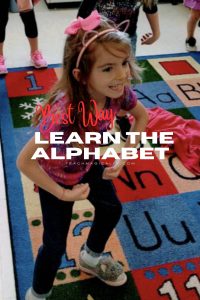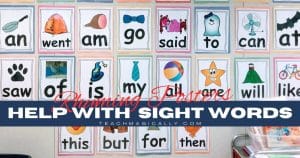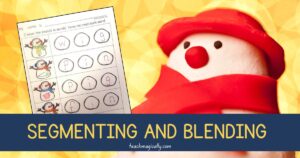Do you know the best way to learn the alphabet with kindergarten kiddos? Add a little movement to make learning the alphabet fun! Here is the way we dance to the alphabet so we can learn all the letter names! Of course, it’s because you add movement to learning. Therefore, if you add movement you know the best way to learn the alphabet.

It also helps develop our brains using Gross Motor Skills! Click to get ways to develop Gross and fine Motor Skills
As you can see from the video, we practice crossing the midline of our bodies many different times. Crossing the midline is an important skill for kindergarten students to practice. It helps the left and right hemispheres of the brain to communicate. Brain Research for Learning tells many things to with learning.
Because each hemisphere carries out different tasks, it is important for each hemisphere to communicate with the other across the corpus callosum (a mass of tissue in the brain) in order to coordinate movement and learning.
Benefits of Movement as the Best Way to Learn the Alphabet

Movement can play a significant role in helping students learn in school. Incorporating movement into the learning process can have several benefits, both for physical health and cognitive development. Here are some ways movement helps students learn:
- Increased Engagement: Movement can make learning more engaging and interactive, of course! When students are actively involved in activities that require movement, they are more likely to stay focused and attentive so it’s really important for young learners.
- Enhanced Memory: Physical movement can help improve memory retention. Studies have shown that combining movement with learning can lead to better recall of information.
- Improved Concentration: Short movement breaks or physical activities can help students refocus their attention. Breaking up long periods of sitting with brief movement breaks can prevent mental fatigue and improve concentration.
- Active Learning: Movement-based activities promote active learning, where students are actively participating in the learning process rather than passively absorbing information. This can lead to a deeper understanding of the material.
- Brain Development: Physical activity has been linked to improved brain development, particularly in areas related to cognition and executive function. Regular movement can support overall brain health, which is essential for learning.
- Body-Mind Connection: Movement helps students develop a better understanding of the connection between their bodies and minds. This awareness can lead to improved self-regulation and self-awareness.
- Increased Motivation: Incorporating movement into lessons can make learning more enjoyable and motivating for students. When they associate learning with fun and physical activity, they are more likely to be motivated to participate.
The next time you need some movement! Practice the alphabet magically!
Hugs,
Debora




